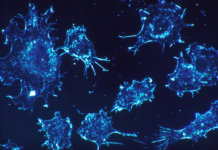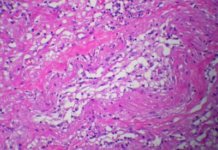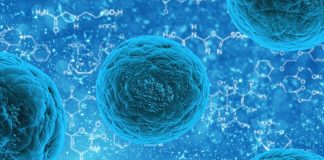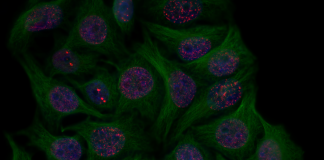Coffee enthusiasts could live longer and healthier lives
Those who drink every day the equivalent of three cups of coffee, decaffeinated or not, would have a longer life expectancy than those who don’t.
A wide European study links life expectancy to coffee consumption
Annals of Internal Medicine [1] published a study directly linking coffee consumption to a better life expectancy. It is the largest observational study on the subject so far. For 16 consecutive years, researchers from the International Agency for Research on Cancer (IARC) in Lyon, in collaboration with researchers from the Imperial College London and other European countries, gathered data collected from 521,300 subjects, with 130,600 men and 321,000 women. The subjects were older than 35 and took part in EPIC (European Prospective Investigation into Cancer and Nutrition). EPIC is a European study aiming to understand the link between diet, lifestyle and the apparition of cancer and chronic diseases.
The researchers compared the daily coffee intake to mortality rates. Among the causes of death, they found cardiovascular diseases, digestive diseases and respiratory diseases, as well as cancer, suicide and deaths with other external causes, such as accidental death. Coffee consumption and lifestyle habits were given one single time through a form filled in by the subjects themselves. On the form, the subjects reported the number of coffee cups they drank daily, weekly or monthly. The quantity was then converted into milliliters per day with “typical cup” models given in the facilities were the study took place. The researchers then spread the daily coffee consumption over four quartiles. The first one was made up of subjects who drank no coffee to low amounts of it. The second and third were a low, moderate consumption and high, moderate consumption, respectively. The last quartile was for the subjects with a very high coffee consumption. It was only specified in 5 countries whether or not the beverage was caffeinated. The causes of death were gathered through different channels depending on the country: collecting the death certificates, or asking hospitals directly.
Unsurprisingly, there was no link between coffee consumption and the number of accidental deaths, or suicide. However, after the data was adjusted1, mortality seemed to be lowered as coffee consumption went up. This observation was made in all pathological cases, in every country taking part in the study, with no relation to gender or to the presence of caffeine. The decrease in mortality from circulatory or digestive diseases was even more significant.
A sub-cohort (n=14,800) was randomly chosen to undergo additional analyses. With this method, the researchers could account for the many variations of liver biomarkers, and for inflammatory state depending on the amount of coffee ingested. The blood tests also helped evaluate subject sensibility to insulin, as well as their blood lipids levels.

Drinking coffee helps with some biological functions and decreases mortality risks
The researchers noted that big coffee drinkers had lower levels of ALP2, ALT3, AST3, and GGT4, but higher levels of albumin5. For women only, high coffee consumption was linked to low levels of CRP6, HbA1c7 serum, and Lp(a)8, as well as a high concentration of HDL-C9.
Moreover, researchers explained that it was not the first time that mortality and coffee consumption were proven to be inversely proportional. Other studies conducted in the United States and in Japan had led to the same conclusion [2] [3] [4] [5] [6]. The IARC study also showed a strong decrease of the mortality with liver diseases. Previous studies led to a similar conclusion: caffeine could have an anti-fibrogenic effect on hepatocytes and on stellar liver cells by reducing their multiplication, stimulating apoptosis and inhibiting cell adhesion [7] [8]. Coffee is known for stopping fatty liver disease by reducing lipid accumulation, oxidative stress and liver inflammation [9]. It would also be beneficial for liver function in hepatitis C patients [10].
Regarding the inverse association between coffee consumption and mortality by circulatory diseases, the results match those of the National Institute of Health – AARP from 2012 [2]. In this case, there is a stronger correlation in women than in men. The difference between the genders could be due to the decrease of mortality from cerebro-vascular diseases linked to coffee consumption. Besides, one study showed that stroke incidence is lower in women with regular coffee consumption [11] [12]. HDL-C levels were found to be higher in women who are regular coffee drinkers. However, the same was not true for men. There is also a link between high levels of HDL-C and a lower risk of stroke and circulatory diseases [13]. Lp(a), CRP and HbA1 levels, directly proportional to the occurrence of cardiovascular diseases tend to decrease in link with coffee consumption, but only in women. Lastly, regarding circulatory diseases, the difference in mortality between women and men could be explained by the more or less beneficial effects of coffee on the metabolic and inflammatory functions, which can differ depending on the gender.
Despite all these beneficial effects, the researchers noticed that in the female population, coffee consumption is proportional to the general increase of cancer mortality. This result is affected by a significant rise in ovarian cancer mortality. According to the research team, there is no convincing hypothesis as to why coffee could increase mortality in this type of cancer. They outlined that the result might be fallacious and that the role of coffee consumption in ovarian cancer must be studied further. This link had already been noted [14] when other studies had shown the opposite effect [15] [16] [17].
In the case of suicides, the number of deaths seems inversely proportional to coffee consumption, in men only. The decrease in suicide risk linked to an increasing coffee consumption had already been observed in a Nurses’ Health Study (NHS II) [2] although a Finnish study showed the opposite effect [18]. The European study only counted 418 suicides, a very low number given the sample size. This can probably call this last conclusion into question. The research team specified that there was a lack of information (drug use, psychiatric follow-up, neurotic state…) in those specific cases, which prevents from drawing any hypothesis.

Coffee contains substances with many health benefits
This study turns out to be very interesting because of its length in time and the great number of people who took part in it. The sample size decreases the probability of bias. International exploration allows to include many dietary habits and lifestyles in the study, even though as a result those same factors might have contaminated the results. As an example, only five countries accounted for the amount of caffeine in the drink. In the analyses on the sub-cohort (n=14,800) the results were refined1, and the difference between caffeinated and decaffeinated drinks was taken into account. The results were coherent with those of the bulk of the group (n=521,300) There is a follow-up bias: the importance of consumption and habits were only given once.
The results are seemingly very close to biological facts: one or more substances in coffee allow for a longer life expectancy. What remains to be explained is what they are and how they affect the body.
As to caffeine, it might have a role in keeping the body healthy, but is certainly not alone doing so, since study results are not dependent from caffeine levels. For information purposes, coffee contains anti-oxidants, especially polyphenols. Anti-oxidants can protect the body from the free radicals resulting from the oxidation process and contribute to aging. The gerontoprotective properties of coffee could be linked to its levels of antioxidants.

* Reference category was merged with low consumption (quartile 1) due to low case numbers among nonconsumers.
* Based on country-specific quartiles of coffee consumption after exclusion of nonconsumers. Quartile cutoffs were 500, 900, and 1300 mL/d in Denmark; 150, 280, and 450 mL/d in France; 261, 395, and 580 mL/d in Germany; 70, 140, and 240 mL/d in Greece; 60, 92, and 138 mL/d in Italy; 375, 500, and 750 mL/d in the Netherlands; 300, 420, and 540 mL/d in Norway; 50, 105, and 196 mL/d in Spain; 300, 400, and 601 mL/d in Sweden; and 83, 380, and 488 mL/d in the United Kingdom.

Glossary
Statistical adjustment is when one corrects the parasitic effects induced by covariables influencing the evaluation criterion as well; here, death. This reduces the white noise induced by covariables and allows for a better accuracy in the estimates. In the study, covariables with corrected white noise are first tobacco and then alcohol, BMI, physical activity, daily caloric intake and diet quality, menopause and its hormonal treatment, hormonal contraceptives, age, education, country.
- Alkaline phosphatase (ALP) : A high level of alkaline phosphatase indicates liver disease, or bile duct obstruction.
- Alanine transaminase (ALT) and aspartate aminotransférase (AST) : High concentrations of ALT and AST in the body show an inflammatory state, often in the liver. It reveals that some of the liver cells have entered apoptosis due to serious liver damage.
- Gamma glutamyl transpeptidase (GGT) : GGT levels rise around the age of 60. They allow to monitor liver health.
- Albumin: Low levels of albumin could indicate an important loss of liver tissue.
- C-reactive protein (CRP): CRP levels does not only indicate inflammation. Selon une étude menée par le Dr. According to a study by Dr. Ridker from Harvard University, they are better indicators of damage to the cardiovascular system than cholesterol levels.
- Glycohemoglobin (HbA1c): HbA1c percentage varies in proportion with regular glycemia over three months. Measuring its levels allows to better understand glycemic balance over time than with a simple test of glucose levels.
- Lipoprotein (a) (Lp(a)) : Lp(a) belongs to the LDL family (low density lipoprotein). Lp(a) index helps diagnose coronary and vascular diseases in the brain or in the venous system. In terms of health, the lower it is, the better.
- HDL cholesterol (HDL-C): HDL cholesterol (high density lipoprotein) is a set of lipoproteins carrying cholesterol from the arteries to the liver. It is known as “good cholesterol” since it avoids accumulation of cholesterol in the blood vessels, which usually is a cardiovascular liability. The higher it is, the better.

Farah Bahou

Author
Auteure
Farah studied biochemistry, therapeutics and molecular and biopharmaceutical innovation at Aix-Marseille university and Paris 7 Diderot university.
More about the Long Long Life team
Farah a étudié la biochimie, la thérapeutique et les innovations moléculaires et biopharmaceutiques à l’université d’Aix-Marseille et à l’université Paris 7 Diderot.
En savoir plus sur l’équipe de Long Long Life
Sources :
[1] Gunter, M. J., Murphy, N., Cross, A. J., Dossus, L., Dartois, L., Fagherazzi, G., … & Tjønneland, A. Coffee Drinking and Mortality in 10 European CountriesA Multinational Cohort StudyCoffee Drinking and Mortality in 10 European Countries. Annals of Internal Medicine.
[2] Freedman ND, Park Y, Abnet CC, Hollenbeck AR, Sinha R. Association of coffee drinking with total and cause-specific mortality. N Engl J Med. 2012;366:1891-904. [PMID: 22591295] doi:10.1056/ NEJMoa1112010
[3] Loftfield E, Freedman ND, Graubard BI, Guertin KA, Black A, Huang WY, et al. Association of coffee consumption with overall and cause-specific mortality in a large US prospective cohort study. Am J Epidemiol. 2015;182:1010-22. [PMID: 26614599] doi:10.1093/aje /kwv146
[4] Lopez-Garcia E, van Dam RM, Li TY, Rodriguez-Artalejo F, Hu FB. The relationship of coffee consumption with mortality. Ann Intern Med. 2008;148:904-14. [PMID: 18559841] doi:10.7326/0003-4819- 148-12-200806170-00003
[5] Sugiyama K, Kuriyama S, Akhter M, Kakizaki M, Nakaya N, Ohmori-Matsuda K, et al. Coffee consumption and mortality due to all causes, cardiovascular disease, and cancer in Japanese women. J Nutr. 2010;140:1007-13. [PMID: 20335629] doi:10.3945/jn.109 .109314
[6] Tamakoshi A, Lin Y, Kawado M, Yagyu K, Kikuchi S, Iso H; JACC Study Group. Effect of coffee consumption on all-cause and total cancer mortality: findings from the JACC study. Eur J Epidemiol. 2011;26:285-93. [PMID: 21298466] doi:10.1007/s10654-011-9548-7 25. Klatsky AL, Morton C, Udaltsova N, Friedman GD. Coffee, cirrhosis, and transaminase enzymes. Arch Intern Med. 2006;166:1190-5. [PMID: 16772246]
[7] Shim SG, Jun DW, Kim EK, Saeed WK, Lee KN, Lee HL, et al. Caffeine attenuates liver fibrosis via defective adhesion of hepatic stellate cells in cirrhotic model. J Gastroenterol Hepatol. 2013;28: 1877-84. [PMID: 23808892] doi:10.1111/jgh.12317
[8] Vitaglione P, Morisco F, Mazzone G, Amoruso DC, Ribecco MT, Romano A, et al. Coffee reduces liver damage in a rat model of steatohepatitis: the underlying mechanisms and the role of polyphenols and melanoidins. Hepatology. 2010;52:1652-61. [PMID: 21038411] doi:10.1002/hep.23902
[9] Freedman ND, Everhart JE, Lindsay KL, Ghany MG, Curto TM, Shiffman ML, et al; HALT-C Trial Group. Coffee intake is associated with lower rates of liver disease progression in chronic hepatitis C. Hepatology. 2009;50:1360-9. [PMID: 19676128] doi:10.1002/hep.23162
[10] Larsson SC, Virtamo J, Wolk A. Coffee consumption and risk of stroke in women. Stroke. 2011;42:908-12. [PMID: 21393590] doi:10 .1161/STROKEAHA.110.603787
[11] Lopez-Garcia E, Rodriguez-Artalejo F, Rexrode KM, Logroscino G, Hu FB, van Dam RM. Coffee consumption and risk of stroke in women. Circulation. 2009;119:1116-23. [PMID: 19221216] doi:10 .1161/CIRCULATIONAHA.108.826164
[12] Di Angelantonio E, Sarwar N, Perry P, Kaptoge S, Ray KK, Thompson A, et al; Emerging Risk Factors Collaboration. Major lipids, apolipoproteins, and risk of vascular disease. JAMA. 2009;302: 1993-2000. [PMID: 19903920] doi:10.1001/jama.2009.1619
[13] Lueth NA, Anderson KE, Harnack LJ, Fulkerson JA, Robien K. Coffee and caffeine intake and the risk of ovarian cancer: the Iowa Women’s Health Study. Cancer Causes Control. 2008;19:1365-72. [PMID: 18704717] doi:10.1007/s10552-008-9208-8
[14] Braem MG, Onland-Moret NC, Schouten LJ, Tjønneland A, Hansen L, Dahm CC, et al. Coffee and tea consumption and the risk of ovarian cancer: a prospective cohort study and updated metaanalysis. Am J Clin Nutr. 2012;95:1172-81. [PMID: 22440851] doi:10 .3945/ajcn.111.026393
[15] Tworoger SS, Gertig DM, Gates MA, Hecht JL, Hankinson SE. Caffeine, alcohol, smoking, and the risk of incident epithelial ovarian cancer. Cancer. 2008;112:1169-77. [PMID: 18213613] doi:10.1002 /cncr.23275
[16] Lucas M, O’Reilly EJ, Pan A, Mirzaei F, Willett WC, Okereke OI, et al. Coffee, caffeine, and risk of completed suicide: results from three prospective cohorts of American adults. World J Biol Psychiatry. 2014;15:377-86. [PMID: 23819683] doi:10.3109/15622975.2013 .795243
[17] D.M. Gertig, M.A. Gates, J.L. Hecht, S.E. Hankinson “Caffeine, Alcohol, Smoking, and the Risk of Incident Epithelial Ovarian Cancer” Authors: S.S. Tworoger, Cancer Published online ahead of print, 22 January 2008, doi: 10.1002/cncr.23275
[18] Tanskanen A, Tuomilehto J, Viinama¨ ki H, Vartiainen E, Lehtonen J, Puska P. Heavy coffee drinking and the risk of suicide. Eur J Epidemiol. 2000;16:789-91. [PMID: 11297219]














